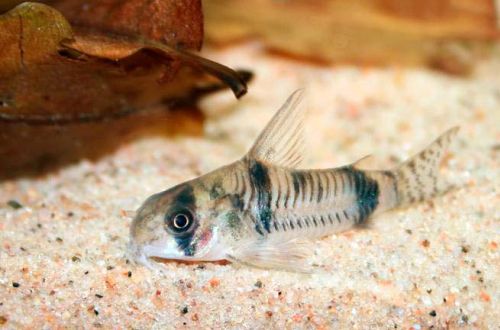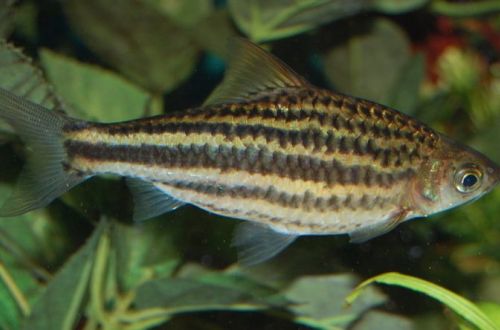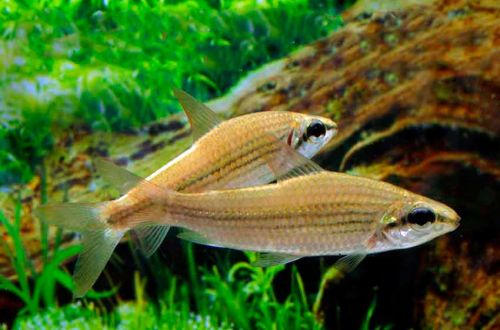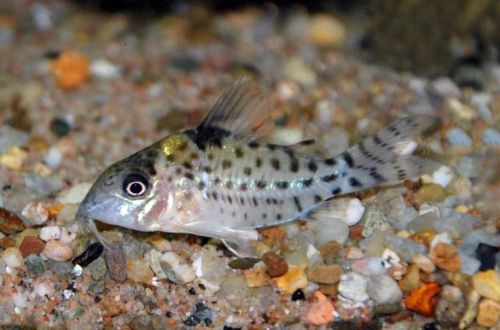
Reynolds corridor
Corydoras Reynolds or Corydoras bumblebee, scientific name Corydoras reynoldsi, belongs to the family Callichthyidae (Shell catfish). The catfish is native to South America. Inhabits the basin of the Japura River – the left tributary of the Amazon, flowing through the territory of Colombia and Brazil. Inhabits shallow rivers, backwaters with sandy substrates. Prefers regions with a weak current.

Description
Adult individuals reach a length of about 3 cm. The body shape is typical for the Corydoras genus – strong, stocky with small fins. The first rays of the pectoral and dorsal fins turned into sharp spikes. The body is covered with bone plates, which are modified scales.
The coloration is light with gray markings. On the head, along the dorsal fin and the base of the tail are vertical black stripes. Features of the body pattern are reflected in the name of the species – Bumblebee Corydoras.
For a long time, under the name Reynolds’ Corydoras, a related species was supplied – Tukano Corydoras, which has a similar color and lives in the same region.
Behavior and Compatibility
Corydoras are one of the most peaceful inhabitants of home aquariums. They prefer to stay in large flocks, so it is recommended to purchase a group of 3-4 individuals. Compatible with many other fish of comparable size.
Brief information:
- The volume of the aquarium – from 40 liters.
- Temperature – 22-26°C
- Value pH — 6.0–8.0
- Water hardness – soft to hard (5-25 dGH)
- Substrate type – any soft
- Lighting – moderate or bright
- Brackish water – no
- Water movement is weak
- The size of the fish is about 3 cm.
- Food – any food
- Temperament – peaceful
- Keeping in a group of 3-4 individuals
Maintenance and care, arrangement of the aquarium
The optimal size of the aquarium for a group of 3-4 catfish starts from 40 liters. The minimal decoration includes sandy substrates, some natural driftwood, bark and leaves of some trees. Plants are allowed.
They prefer a well-lit habitat with warm, soft, slightly acidic water and gentle currents. However, they can adapt to living in environments with higher pH and GH values.
Aquarium maintenance is standard and consists of such mandatory procedures as weekly replacement of part of the water with fresh water, removal of organic waste and equipment maintenance.
Food
Will accept most popular foods such as flakes and pellets. A good choice would be small invertebrates (daphnia, gammarus, bloodworm, brine shrimp, etc.) in fresh, dry and frozen form.
Sources: fishbase.se, planetcatfish.com





